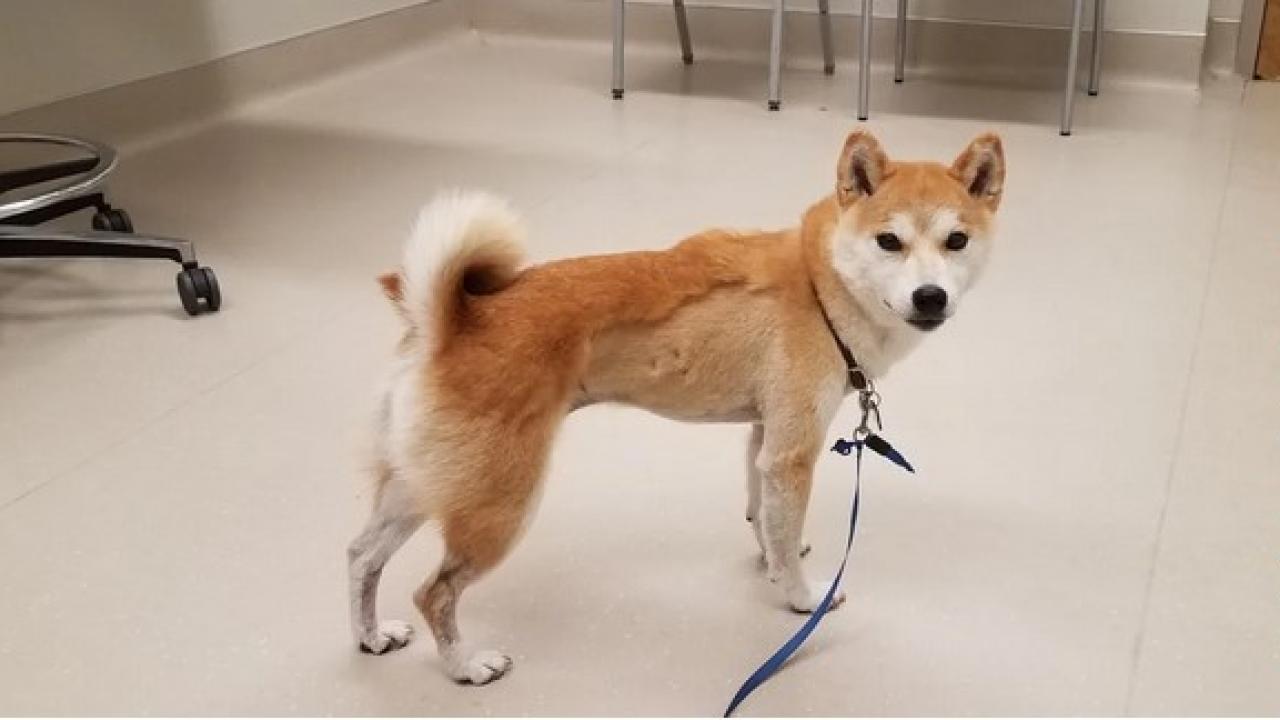
UC Davis Research Shows Success of Surgery to Correct Chylothorax in Dogs

When Kitsune (Kit), a 7-year-old Shiba Inu, was lethargic in 2019, her owner Gayle Brock knew something was wrong. She brought her typically energetic dog to their primary veterinarian, but Kit was ultimately referred to specialists at the UC Davis veterinary hospital where she was diagnosed with idiopathic chylothorax (IC). Shiba Inus are among certain breeds that are overrepresented for IC.
This condition causes a build-up of a milky white fluid called chyle (which leaks from the thoracic duct) in the chest. Before arriving at UC Davis, Kit had a combined 1,200 milliliters of fluid drained from her chest on two separate occasions. Once at Davis, another 600 milliliters of fluid were drained from her chest.
Kit needed a corrective surgery called a thoracic duct ligation (TDL). This procedure is often done via an open surgical approach, and historically the procedure has a low success rate of around 50%. UC Davis offers a minimally invasive approach using thoracoscopy to correct the problem and thanks to recent technological advancements and refinements to the procedure, success rates closer to 90% have been achieved.
“I couldn’t believe what I was hearing,” said Brock. “We hadn’t heard anything other than the 45-60% success rate, either from other vets or from our own research online. It was amazing.”
Kit’s surgery involved a TDL and a pericardectomy, removal of the membrane surrounding the heart to relieve any constriction the pericardium may have been causing on her heart.
Kit was able to enroll in a UC Davis study of dogs with this condition, recently published in the Journal of the American Veterinary Medical Association. In the research, UC Davis veterinary surgeons and cardiologists documented outcomes of thoracoscopic treatment of IC in dogs with or without constrictive pericardial physiology (CPP), signs of a form of heart failure. If there were signs of CPP, the dog underwent a pericardectomy along with the TDL. The study also evaluated patterns of chyle flow redistribution after a TDL.
Twenty-eight dogs participated in the study – 17 underwent the TDL alone, while 9 also had a pericardectomy. Ninety-six percent of the dogs survived the immediate procedure. After a median follow-up of 25 months, IC was resolved in 94% of the dogs with the TDL alone, and 88% with the pericardectomy. The researchers concluded that, in the absence of CPP, the additional benefit of a pericardiectomy in the treatment of IC is questionable.
Brock was so grateful for the care that Kit received that she become more involved with the School of Veterinary Medicine. She was welcomed to the Dean’s Leadership Council, a volunteer group of professionals who advise the dean on initiatives designed to fulfill the school’s teaching, research, and service mission.
Brock also made a planned gift donation to the school for canine soft tissue research. She hopes that the gift will help UC Davis veterinarians treat more animals with complex cases. Her gift will also support the Veterinary Medical Complex expansion and help UC Davis serve as many animals in need as possible.
# # #
